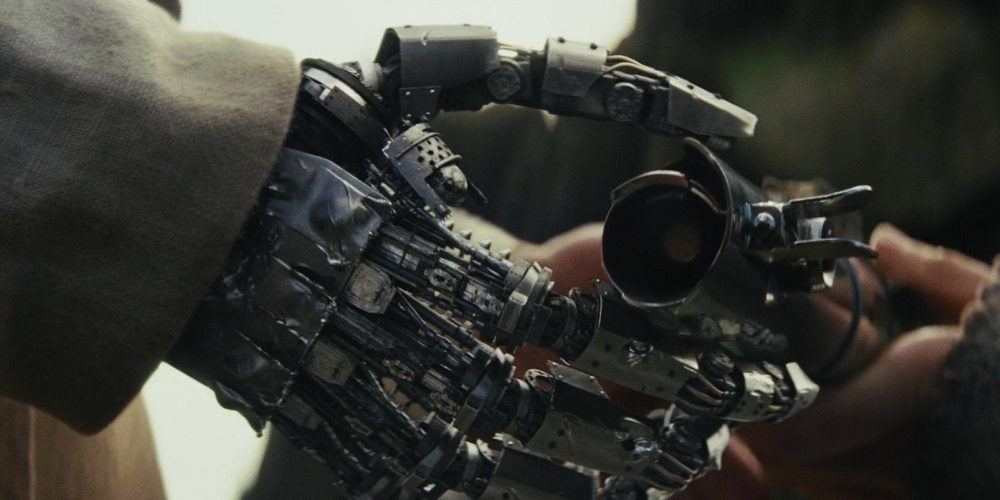This piece was originally published on contributor Ryan Holt’s culture blog, Caves of Altamira.
***
I am not particularly invested in the future of Disney’s Star Wars franchise beyond witnessing John Williams complete his remarkable work on this new trilogy. For me, Star Wars will always remain George Lucas’ mad vision, a collection of impulses that were, for both better and worse, unique and personal. These new Star Wars films are less extensions of that same vision than they are responses to it, and, as such, they have different footing.
The most significant throughline for Star Wars in all of its phases is the work of the venerable John Williams, whose contributions to the aesthetic landscape of the series remain so significant that he can justifiably be called a quasi-auteur. His work on the series may be his magnum opus; certainly, his work on Star Wars–three separate trilogies that span the length of Williams’ extensive career, each distinct in character, but nevertheless tied together through thematic overlap–has no real equivalent in the world of film music. Few ongoing series have developed such longstanding relationships with composers, and even fewer have had such clear structures in which composers are free to develop their work. It would be so disheartening for this impressive project to be completed by a Williams imitator, rather than the great artist himself.
Williams’ musical landscapes for these trilogies captures each trilogy’s emotional and aesthetic shifts. The original trilogy was a swashbuckling fairy tale loaded with rollicking adventure that occasionally gestured toward myth and magic. Williams took up the legacy of Korngold (the series’ most significant musical touchstone, and a reference point for Lucas when discussing the outline of the score with Williams) and wove three films of robust, romantic themes and bold marches. Williams, and the films themselves, never went full-on mythic until the conclusion of Revenge of the Jedi, as a chorus of male vocals backs the battle between father and son. In this moment, we see glimmers of what Williams would do in the prequel trilogy.
The prequel trilogy was a chronicle of a civilization’s political and religious fall, which Williams infused with all of the musical grandeur befitting an epic. The themes tend to be more stately than that of the original trilogy, even as they share some essential DNA. Compare the prequel trilogy’s love theme, “Across the Stars,” which paints doomed romance with a courtly air, to the original trilogy’s sweeping love theme, “Han and the Princess,” which, in its full statement, fully gives itself over to breathless passion. Williams’ themes for the major duels of the prequel films, “Duel of the Fates” and “Battle of the Heroes,” take the operatic essence of Return of the Jedi‘s climactic battle to new heights, weaving that impulse into the prequels’ musical statements of lament (“Qui-Gon’s Funeral” and “The Immolation Scene”).
Disney’s new trilogy has framed itself explicitly as a saga of transition, in which new, inexperienced characters tentatively navigating the complicated legacies of battle-scarred heroes. Williams plays into the mixture of youthful innocence and mature grief. The mythic impulse comes in flickers, not full statements: amidst a more amorphous present, we are given glimpses of the heroic past and gestures toward a hopeful future.
Williams’ score for The Force Awakens belonged first and foremost to the character of Rey, whose theme served as its backbone, echoing throughout the score in different statements until the grand musical climax of the “Jedi Steps” and its full, declarative presentation during the end credits suite. “Rey’s Theme” ultimately intermingles with the “Force Theme,” which, given its strong identification with Luke Skywalker, signals their intertwined destinies. In the final minute of his score, Williams signaled what the film itself so often strained to gesture at, a discovery of new possibilities in the synthesis between old and new. The other themes established in The Force Awakens were more hesitant, reflecting fledgling characters and movements that had not yet come into their own. The most intriguing of those supporting themes belongs to Kylo Ren, who is, in some ways, this trilogy’s secondary protagonist. His theme is not really a theme at all, but collection of distinct motifs that signal his inner emotional turmoil and shifting sense of identity.
The Last Jedi seamlessly extends from Awakens‘ score, a collision between Star Wars generations that resolves the old themes while looking forward to the new. Indeed, there are so many distinct themes at play in The Last Jedi score that it borders on feeling crowded, but William maintains clarity in their development throughout. The end credits suite for The Last Jedi follows a new template for the series, eschewing Williams’ typical penchant for presenting “concert suite” arrangements of the film’s themes for an intricate and dense collage of fragmented motifs. Themes emerge, disappear, and then re-emerge.
One brief restatement registers with more clarity than the others. In a loving tribute to the late Carrie Fisher, Williams presents “Leia’s Theme” with new orchestrations. The familiar notes ring out in a sublimely tender piano arrangement, lightly backed by strings. A flute joins the piano, and then the theme fades away, gone too soon.
“Rey’s Theme” once again serves as the throughline, bringing the suite to a close in a way that recalls the tender resolution of the score for The Force Awakens. Here, the final phrases are tentative, presented not as conclusion, but as a pause before the final act.








